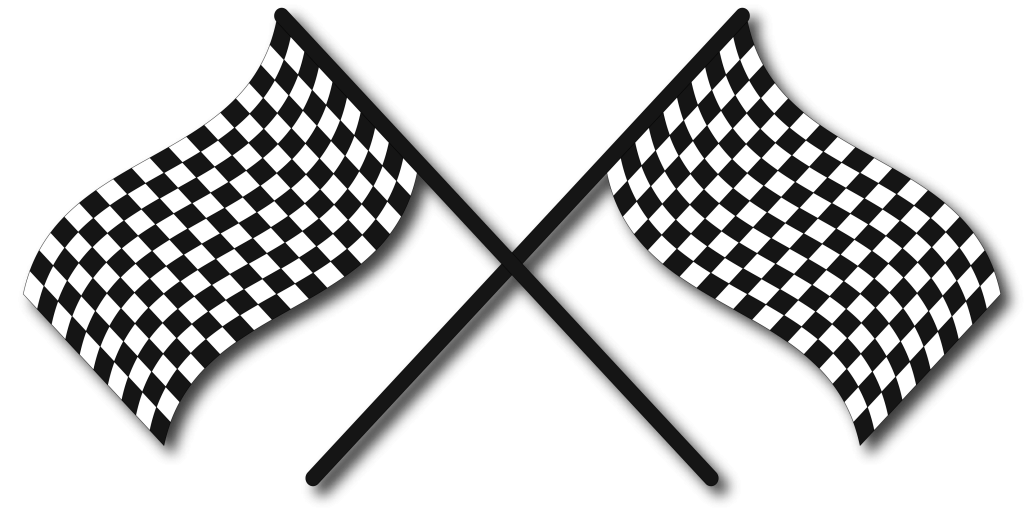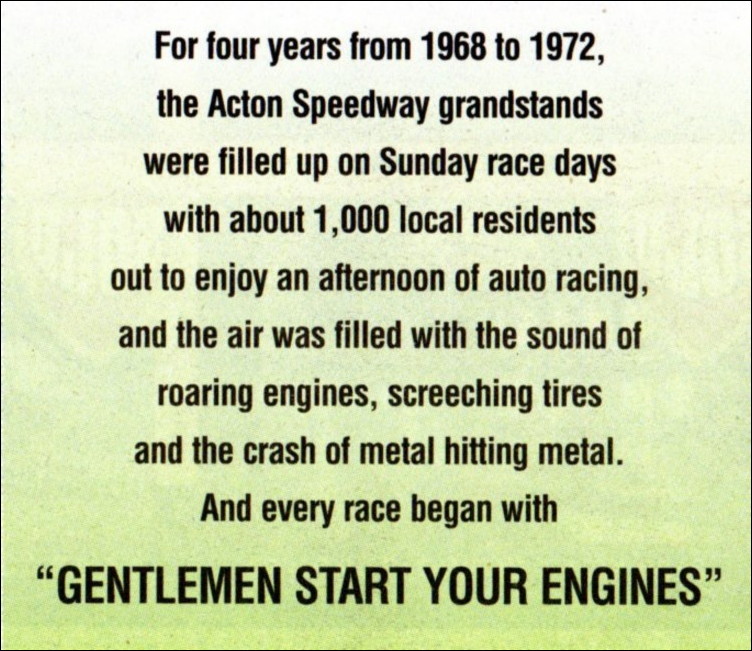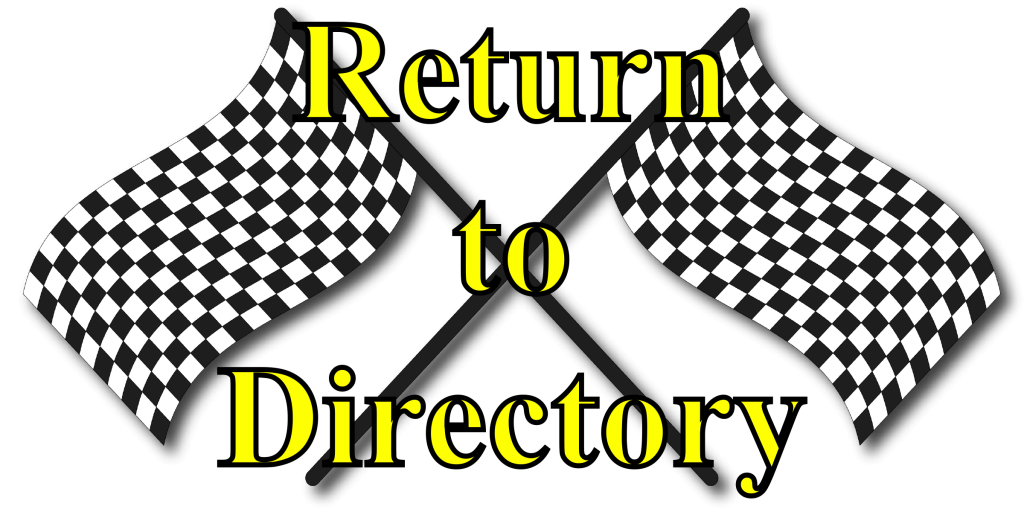By Jim Trautman

In an abandoned farmer’s field, near the Ospringe intersection of Highway 124 and 125, are the remains of the old Acton Speedway. Parts of the 1/4 mile racetrack can still be seen if you know where to look.
In a few years though, there will be nothing left of the fading piece of local history. Several of the buildings are gone and the deteriorating grandstands will soon crumble altogether. For four years from 1968 to 1972, those grandstands were filled up on Sunday race days with about a 1,000 local residents out to enjoy an afternoon of auto racing, and the air was filled with the sound of roaring engines, screeching tires and the crash of metal hitting metal.
And of course prior to the starting of any race, the famous, “Gentlemen, Start Your Engines” was blasted from the loud speakers.

The track was the project of the late Ron White, who was a local racing enthusiast. He cut the quarter mile oval in his farm field, built the grandstands, ticket booth, announcers booth and snack bar in the middle of his farm field.
Auto racing had become popular in Ontario prior to World War II. The first races were on dirt tracks and large horse tracks. With the end of World War II, auto racing became even more popular. The major problems were on hot, dry days the dirt clouds not only interfered with the spectators being able to see the autos, but it obstructed the drivers view and many serious accidents happened. Horse tracks lacked in other safety features such as wooden fence posts that allowed the autos to crash through and in some cases, reach the spectators grandstands. Tire wheels could and did in some instances become tangled in the barbed wire attached to the fences creating yet another safety hazard.

So in the early 1950’s, new racetracks began to be constructed specifically for auto racing. Delaware Speedway, Ascot Park (Tillsonburg), Varney, Cayuga, Blue Water, and the CNE Grounds.
In other instances, since there were so few regulations and restrictions, individuals or farmers cut tracks in their fields. This was the case for the Acton Speedway, which in reality is not close to Acton, but Ospringe.
It operated every Sunday from May to September. Racing began at 2:30pm and, because the track had no lights, wrapped up before dark.
A column by John McNabb in the Acton Free Press on May 29th, 1968, said the Acton Speedway was, “drawing motor racing enthusiasts by the carload every Sunday afternoon”.
Each Sunday drivers from around the area jam the pits at the track to try their hands at knocking one another off the oval and come out to meet the checkered flag with at least one car remaining.

Parking for the spectators’ cars was behind the grandstand and auto pit row was behind the back straight away. Entrance to the track was opposite the grandstands. The ticket booth had a dual purpose, before the race to sell tickets and during the race it became the announcers booth. It had an unobstructed view of the racetrack, pit area, and grandstands.
According to Larry Cox of nearby Erin, the dirt track was paved before the end of the first racing season. Cox drove several cars at the track over the years.
“My first was a 1956 Mercury and it carried, appropriately enough, number 56”, said Cox. “Later I drove a 1957 Ford and Chevy.”
Tom Lovell, retired owner of an auto repair shop in Hillsburgh, has fond memories of those days of his youth and old number 8, his blue 1956 Chevy. There were two classes that raced, the A and B class. The A cars were faster than the B cars. There were usually 8 eight to twelve cars in each preliminary race and then the winners of the preliminary race moved on to the feature race, which was 25 laps.
According to Cox, the Acton Speedway was the only track where the cars raced uphill due to the way the track was banked. Cars could hit 75 miles per hour on the long straight away. But if a driver lost control, he could fly out over the top and down a steep embankment. There was always St. John Ambulance at the track”. (NOTE; Acton Speedway was on a slight grade, the cars raced downhill on the front straight and uphill on the back straight).
As for the name, it seems it was called the “Acton Speedway” to try and attract a crowd from a wider area. Its success may have led to the track’s ultimate demise. Several people speculate that as more non-local drivers appeared to race each Sunday, the attendance dwindled because the fans could no longer identify with the drivers. Some drivers began arriving from Toronto with more money to put into their cars. They began to win more and more of the races and the local drivers were shut out.
Cox and Lovell are still involved with racing. Lovell’s daughter and Cox’s son carry on the family racing tradition. They can be seen racing at Varney or Flamboro on the Ontario auto circuit.

If you are driving past the old track on a Sunday afternoon, listen close, you may still hear the blaring over the loudspeakers, “Gentlemen, Start Your Engines”.
Or, if you want some exercise, knock on the farmer’s door (the house with the red tractor out front) and ask permission to go back to the old Speedway. You will discover old ’50’s bumpers, tires, and other left over debris from when the engines roared and the cars raced around the track.
For more photos and information on any “Ghost Race Track” one can stay here on Yesterday’s Speedways or you can go to canadianracer.com.



